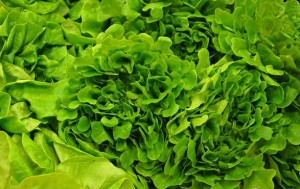[This post is by a local blogger, who has blogged for a while under the radar. I’m promoting this for a wider audience -Liz]
My April 3, 2011, post to this blog was about the dangers of consuming food and drugs from foreign countries (see “Eat At Your Own Risk: Foreign-Made Food and Drugs.“) This week, a particularly virulent strain of E. coli appeared on the scene, as people in Europe (and four in the US who recently returned from Germany) came down with nasty symptoms, including stomach cramps and bloody diarrhea. Currently, 1,833 cases of the E. coli infection have been confirmed, according to the European Centre for Disease Prevention and Control. What makes this strain of E. coli even more dangerous is that it attacks not only the digestive system, but also produces a by-product called the “shiga” toxin that may damage the kidneys. Reports indicate that this strain of E. coli originated in produce, primarily bean sprouts, grown in northern Germany. However, sprouts, cucumbers, and tomatoes grown in Denmark, the Netherlands, and Spain are also suspect.
What exactly is E. coli? It’s a bacteria (Escherichia coli) that is commonly found in our intestines, and helps our bodies to break down and digest food. Certain strains of E. coli, however, move from the digestive system into the bloodstream, where they can cause serious infections. E. coli can contaminate crops when manure is used to fertilize crops, or if water contaminated with E. coli is used to irrigate the crops.
According to the US Food and Drug Administration (FDA),the government recently has stepped up testing of food from Germany and Spain, although very little in the way of produce is imported to the US from those countries or from other European countries. (I have found a lot of produce sold in US grocery stores from Mexico, and Central and South America.)
Be aware that meat and produce from the United States is not 100% safe from E. coli contamination either. There was a small outbreak in the US (145 reported cases) of a similar E. coli strain reported by the Center for Disease Control (CDC) in 2010. That outbreak originated from US-produced shredded romaine lettuce. In general, however, according to Don Kraemer, deputy director of the FDA’s Center for Food Safety and Applied Nutrition, the United States has “one of the safest food supplies in the world.” Reported outbreaks of E. coli worldwide are evidence that this is true.
Treatment for the present outbreak of E. coli is primarily accomplished by keeping patients hydrated with water, and by dialysis, which is used to scrub the blood of patients with infected bloodstreams. In the case of E. coli infections, antibiotics don’t help, and may make symptoms worse because they may increase the release of toxins into the bloodstream.
Precautions that we can take to protect ourselves from E. coli contamination are: (1) eat meat that is cooked well – not red or pink; (2) wash produce well (I use a vegetable and fruit spray) before eating, even if wrappers or labels say the produce has already been washed; (3) wash hands well before preparing food, and (4) wash countertops where food is prepared.
The final precaution that we can take to protect ourselves and our families against E. coli is to buy food and produce made and grown in the USA. With fewer E. coli outbreaks from USA food, buying food and eating “grown in USA, and “product of USA” food just makes good sense – not to mention that it helps our economy. This summer, buy locally grown produce, shop at community farmers’ markets, and look for “Made in USA,” and “Product of USA” labels on food and produce.
**************
This week’s recommended products:
•Fruits and vegetables that are “Product of USA,” including “locally grown” fruits and vegetables (as they come into season.)
•All Natural Veggie Wash Fruit and Vegetable Wash – Made in USA by Beaumont Products, Inc., Kennesaw, GA
Sources :
http://www.cbsnews.com/stories/2011/06/04/earlyshow/saturday/main20068944
http://www.cdc.gov/ecoli/2010/ecoli_o145/index.html
http://kidshealth.org/kid/stay_healthy/food/ecoli.html
http://www.bloomberg.com/news/2011-06-03/water-dialysis-only-treatments-for-deadliest-european-e-coli-outbreak.html
Crossposted at usabuyusa.blogspot.com


